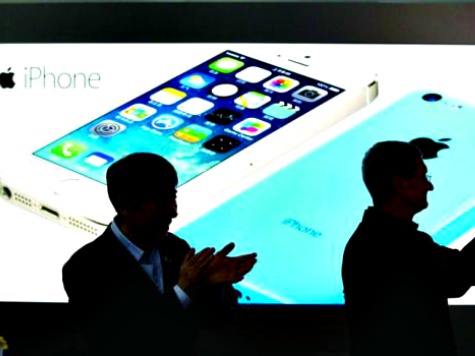
Apple will be holding a media event on Tuesday, September 9th to unveil its iPhone 6, according to reports today in the Wall Street Journal and tech news site Re/code.
The company releases a new phone each year, and the company may also reveal Apple’s highly anticipated iWatch. But what will not have much fanfare going forward is the iconic iPad, which has lost sales to commodity tablets for the last two quarters. With phones now representing more than half of Apple’s revenue, the introduction of iPhone 6 offers a huge risk to the company if there is any type of problem with the product or customer acceptance.
According to a Forbes, iPhone 6 will use in-cell touch panel technology built into the screen to allow a thinner design than the iPhone 5. This also means that the screen will now cover almost all the frame for a full viewing experience for the first time.
The new iPhone 6 operating system, known as iOS 8, was unveiled at Apple’s worldwide developers’ conference in June. At the meeting, Apple demonstrated they intend to be the leader in the “Internet of Things” for consumers. The goal is to integrate the iPhone into individuals’ daily routine in order to streamline everyday tasks and make life more efficient.
Through the HomeKit suite of apps, iPhone 6 will allow users to control home appliances and other connected devices through touch or through Siri voice activation. One of the fun apps unveiled at the conference was the ability to tell Siri you were “going to bed.” Siri then dims the lights, locks your doors, closes the garage door, adjusts the thermostat and turns the security system on. By the time you wake up in the morning, coffee is made and the lights are coming on according to the amount of sunshine available.
Through the HealthKit suite of apps, users will be able to maximize their health and fitness and integrate their personal training. Blood pressure and heart rate performance will be monitored on a continuous basis as the user communicates with “partners” such as Nike to integrate workout advice into their physical training routines.
Apple introduced the iPhone in 2007 and has shipped over a half of a billion units so far. The iPhone 6 will be the company’s 9th version, and recently it was reported that Apple ordered parts for an initial manufacturing run of 80 million iPhones equipped with 4.7-Inch and 5.5-Inch screen sizes. It is expected that Apple will launch the two smaller units in September and the larger units sometime after Christmas.
Such demand would be dream come true for almost any company; but Apple is not just “any company.” At a stock market capitalization of $569 billion, investors have bid up the stock to make Apple the most valuable company on earth. The company is 33% more valuable than Exxon, almost twice as valuable as General Electric, and three times more valuable than IBM.
Apple’s iPad remains a market leader, but for the past two quarters the unit shipments have fallen at a 16% year-over-year decline rate in the company’s second quarter and a 9% decline in the third quarter. The iPad may be going the way of the MacBook personal computer with an eventually modest market share and much lower margins.
Everyone tells me that the difference between the iPhone tablet market and the smartphone market is that iPad must also compete with other tablets, low-end laptops, and 2-in-1 devices as well. But I wonder if the same might soon be true of “phablets”, like the Samsung Note III, that are 2-in-1 smartphones and personal computer tablets.
According to Seeking Alpha, Apple had a 26.9% share of the tablet market in the second quarter of 2014, down from 33% in the same period the prior year. Samsung, the number two player in the tablet market, saw its market share suffer a much smaller market share loss, falling from 18.8% to 17.2% during the same period. The iPad has a price point that is 50% higher than the Samsung Galaxy and three times higher than the commodity brands that have now captured over 50% of the tablet market share.
The iPhone and other high end smartphones have been heavily subsidized by the wireless carriers. The iPhone 5s costs $199 with a two-year contract through Verizon, while the retail price of the phone $650. The LG Lucid 3, a nice mid-range phone, is free with a two-year contract and a $150 retail price. The subsidies have had the effect of making the price difference between the high-end and the low-end appear much smaller. With the FCC about to require wireless carriers to “unlocked” all smartphone sales, I expect the subsidies that have favored iPhone to be dramatically diminished.
The risks to Apple from the iPhone 6 introduction are not just problems with the hardware, software and price. This morning, Seeking Alpha reported that China just restricted Apple iPads and MacBooks from government procurement as retaliation for NSA spying. Such action against the iPhone, in the world’s most populous nation, would crush Apple’s stock price and seriously constrain its business model. The company has been able to amaze consumers with product introductions in the past, but Apple has never had a bigger bet on the future of the company than the iPhone 6.
The author will respond to comments by readers.

COMMENTS
Please let us know if you're having issues with commenting.